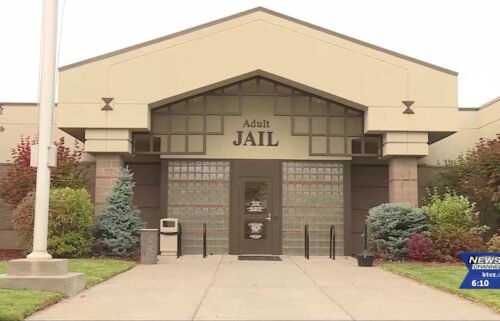Knopp not confident lawmakers will agree on redistricting maps
(Update: Adding video, comments from Sen. Tim Knopp)
Democrats propose putting much of Central Oregon in Third District; GOP would keep lines much the same as before
SALEM, Ore. (AP) — With Oregon getting an additional, sixth congressional seat based on population growth, Republican and Democratic state lawmakers on Friday presented differing visions on where that new district should be.
The Oregon House Interim Committee on Redistricting, evenly split with three Democrats and three Republicans, met remotely by video and also offered vastly different maps on how the existing five U.S. House of Representative districts in Oregon should be redrawn.
Four of Oregon’s House seats in Congress are currently held by Democrats while one, the sprawling Second District has long been held by a Republican.
The Democrats’ map says new congressional District 6 should be south of Portland, Oregon’s biggest city, and west of Interstate 5. Republicans also put it south of Portland, but on the east side of the interstate.
Expanding Oregon’s number of U.S. House seats from five to six won’t necessarily be a win for Democrats, who control the state politically.
The maps were released with little fanfare. The proposed placement of the six congressional districts were not discussed by the lawmakers. A series of virtual public hearings about redrawing the distrcts will start next Wednesday.
State Rep. Shelly Boshart Davis, a Republican and co-chair of the interim redistricting committee, accused Democrats of having in the past conducted gerrymandering — which is the manipulation of electoral district boundaries to win an unfair political advantage.
“Our current districts have diluted the voices of Oregonians for two decades to advance one political party and incumbent politicians,” Boshart said during Friday’s meeting.
Rep. Andrea Salinas, a Democrat and fellow co-chair of the interim committee, contested the allegation.
“With all due respect to my co-chair, repeating the false claim of gerrymandering doesn’t make it true,” Salinas said. “The maps that we’re basing our current maps on passed in 2011, and they were passed with overwhelming bipartisan support.”
One of the biggest map redraws came from the Democrats, whose draft plan would expand U.S. House District 3, which is squeezed between Portland’s eastern suburbs and the Columbia River to the north and far south to the edge of the Central Oregon town of Bend.
The Republican map squeezes District 3 even closer to the river that marks the Washington state line, to allow for the new District 6 to fit into the electoral boundary puzzle.
The Democrats' draft U.S. House map would extend the Third District south to include all of Jefferson County and the northwest corner of Deschutes County, including Bend. The redrawn Second District would continue to represent the rest of Deschutes County, including Redmond and La Pine, as well as Crook County. Republicans' maps would keep all of Central Oregon in the Second District.
In the Oregon House, District 54, which now is an island of Bend in the midst of House District 53, would grow south and west under the Democrats plan, while District 53 would cover the northwest part of Deschutes County, while the rest of the county would be with much of Crook County in House District 55. The rest of Crook County, along with Jefferson and portions of Wasco, would be in District 59. The Republicans' draft plan would keep much the same Central Oregon House district boundaries as before.
The draft maps come just a week before the filing period begins for the May 2022 primary elections.
NewsChannel 21 spoke Friday with state Sen. Tim Knopp, R-Bend, about the redistricting draft maps and process.
He is in favor of the Republican map to keep the Central Oregon congressional district the same, not put Bend residents in a Third District that extends north and east all the way to Portland.
"I know some people in Bend might like Portland, but I know most people would not in the same congressional district as Portland," Knopp said.
When asked if he believes lawmakers could work together to find a compromise, Knopp chuckled and responded, "If I'm a betting man, I'm going to say no. However, I am an optimist, so I am going to say there is still a chance."
He emphasized how important it is for the public to take advantage of the virtual meetings and the new public involvement -- map design software available to all.
"It's really important for citizens to engage, because this is going to determine their representation for the next 10 years," Knopp said.
In a normal redistricting year, the redistricting process would likely have been completed by this time. But the coronavirus pandemic caused delays in the release of U.S. Census Bureau data required to draw new maps. The redistricting data, culled from the 2020 census, was released last month — four months later than expected.
The redistricting numbers that states use for redrawing congressional and legislative districts show where white, Asian, Black and Hispanic communities grew over the past decade.
Steady population growth — driven by newcomers from other states — is giving Oregon greater national political clout. U.S. Census Bureau figures released in April showed the state’s population increased by 10% over the past decade. Oregon as a result got an additional congressional district for the first time in 40 years.
For state legislative districts, there is a set number of districts, so lawmakers can only move the boundary lines and the legislators’ districts must be equal in population. Congressional districts are added and subtracted to states based on population and also must be equal in population.
State legislative Democrats, who overwhelmingly control the Legislature, agreed to give up an advantage in redrawing the state’s political districts for the next 10 years in exchange for a Republican commitment to stop blocking legislation in the state Legislature with delay tactics.
The deal gives Republicans more say over what the boundaries for 90 legislative districts will look like and increases the GOP’s influence on how to divide the state into congressional districts.
The Legislature has until Sept. 27 to complete the redistricting process.
If lawmakers fail to pass new legislative boundaries by then, the task will fall to Secretary of State Shemia Fagan, a progressive Democrat. Lawmakers have succeeded in passing a legal redistricting plan just twice since 1911.
You can view the committee’s submissions at this link. For reference, here’s a legend to help you navigate the maps, so you can see which came from the House and which from the Senate, and from which caucuses:
House- Plan A: Senate Democrats
House- Plan B: House Republicans
House- Plan C: House Democrats
Senate-Plan A: Senate Democrats
Senate-Plan B: House Republicans
Senate-Plan C: House Democrats
Congressional- Plan A: Senate Democrats
Congressional-Plan B: House Republicans
Below is a full list of upcoming virtual public hearings:
Wednesday, September 8:
- 8:00 a.m. - 11:00 a.m. (residents of Congressional District 1)
- 1:00 p.m. - 4:00 p.m. (residents of Congressional District 2)
- 5:30 p.m. - 8:30 p.m. (residents of Congressional District 3)
Thursday, September 9:
- 8:00 a.m. - 11:00 a.m. (residents of Congressional District 4)
- 1:00 p.m. - 4:00 p.m. (residents of Congressional District 5)
- 5:30 p.m. - 8:30 p.m. (residents of Congressional District 1)
Friday, September 10:
- 8:00 a.m. - 11:00 a.m. (residents of Congressional District 2)
- 1:00 p.m. - 4:00 p.m. (residents of Congressional District 3)
- 5:30 p.m. - 8:30 p.m. (residents of Congressional District 4)
Monday, September 13:
- 8:00 a.m. - 11:00 a.m. (residents of Congressional District 5)
- 1:00 p.m. - 4:00 p.m. (statewide: open to residents of any district)
- 5:30 p.m. - 8:30 p.m. (statewide: open to residents of any district)
Click here for more information on how to participate in the redistricting process.




